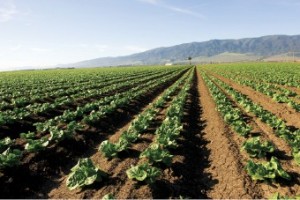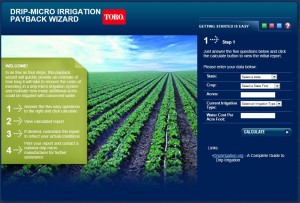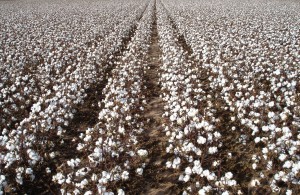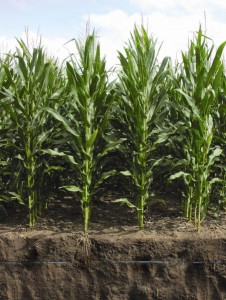 Charged with the issue of seawater intrusion, the Salinas Valley in California has done several things to all but eliminate the issue. First, two reservoirs were constructed to recharge the underground aquifer. Then, a wastewater treatment plant was built to enable the use of recycled water for irrigation. And recently, a rubber dam was installed to divert surface water for irrigation. Along with these attempts to improve the region’s water supply, Salinas Valley farmers have turned to drip irrigation and conservation to help solve their water issues.
Charged with the issue of seawater intrusion, the Salinas Valley in California has done several things to all but eliminate the issue. First, two reservoirs were constructed to recharge the underground aquifer. Then, a wastewater treatment plant was built to enable the use of recycled water for irrigation. And recently, a rubber dam was installed to divert surface water for irrigation. Along with these attempts to improve the region’s water supply, Salinas Valley farmers have turned to drip irrigation and conservation to help solve their water issues.
In a recent article in AgAlert, reporter Bob Johnson interviewed Salinas Valley farmers to see how they have reduced seawater intrusion. Turns out that the region’s conversion to drip irrigation and focus on conservation has a lot to do with it. Bob writes, “Twenty years ago, less than 3 percent of Salinas Valley vegetable acreage was under drip irrigation…(but) the water agency’s most recent survey shows that by 2012, drip irrigation was being used on nearly 60 percent of the vegetable acreage.” Bob goes on to write that between drip irrigation, water supply projects, and other conservation techniques, such as soil moisture sensors and flow meters, the Salinas Valley has even allowed the underground water table to rise.

 Recently, American Vegetable Grower (AVG) magazine sat down with Inge Bisconer, Toro Micro-Irrigation’s technical marketing and sales manager, and discussed the
Recently, American Vegetable Grower (AVG) magazine sat down with Inge Bisconer, Toro Micro-Irrigation’s technical marketing and sales manager, and discussed the  Young Farmer, Kris Verett, didn’t plan on following in his father’s footsteps and becoming a farmer. But at 28, he joined the One-Ton Club at the Texas Gin Show in Lubbock for his drip irrigated cotton.
Young Farmer, Kris Verett, didn’t plan on following in his father’s footsteps and becoming a farmer. But at 28, he joined the One-Ton Club at the Texas Gin Show in Lubbock for his drip irrigated cotton. With the help of manufacturers, like
With the help of manufacturers, like  Charged with the issue of seawater intrusion, the Salinas Valley in California has done several things to all but eliminate the issue. First, two reservoirs were constructed to recharge the underground aquifer. Then, a wastewater treatment plant was built to enable the use of recycled water for irrigation. And recently, a rubber dam was installed to divert surface water for irrigation. Along with these attempts to improve the region’s water supply, Salinas Valley farmers have turned to drip irrigation and conservation to help solve their water issues.
Charged with the issue of seawater intrusion, the Salinas Valley in California has done several things to all but eliminate the issue. First, two reservoirs were constructed to recharge the underground aquifer. Then, a wastewater treatment plant was built to enable the use of recycled water for irrigation. And recently, a rubber dam was installed to divert surface water for irrigation. Along with these attempts to improve the region’s water supply, Salinas Valley farmers have turned to drip irrigation and conservation to help solve their water issues.